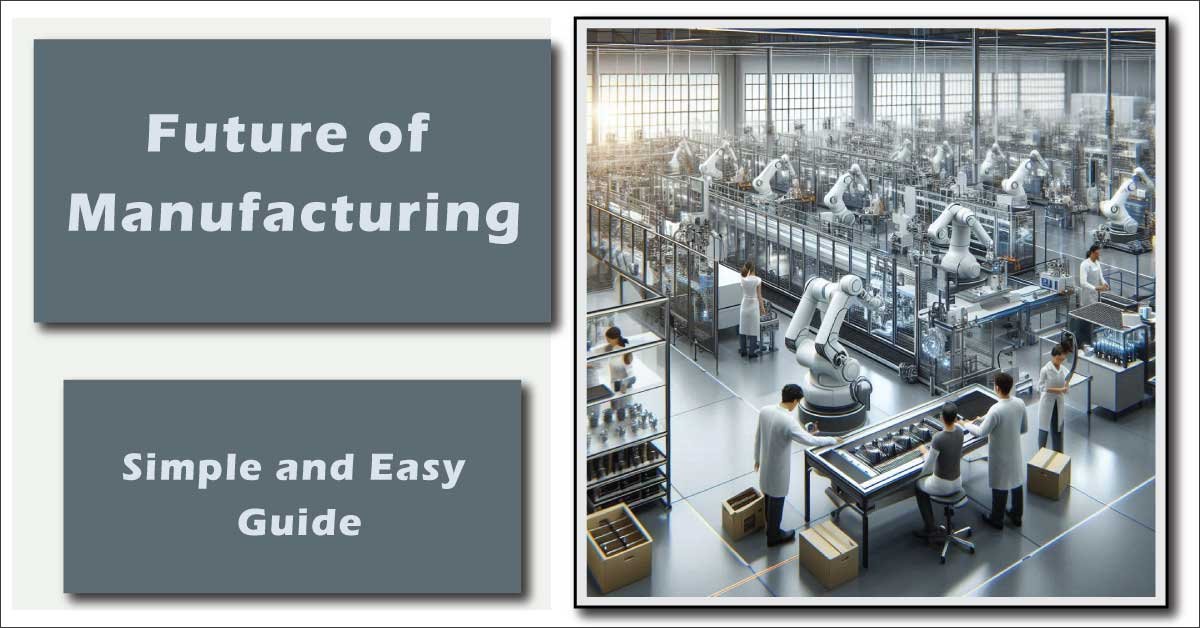As we step into 2025, the manufacturing industry continues to evolve at an unprecedented pace. Driven by advancements in technology, the push for sustainability, and changing consumer demands, manufacturing is no longer just about producing goods. It’s about innovation, efficiency, and adaptation to the changing landscape. In this post, we’ll explore the top manufacturing trends to watch in 2025 and how businesses can capitalize on them to stay competitive.
1. The Rise of Industry 4.0: The Digital Revolution in Manufacturing
Industry 4.0, the fourth industrial revolution, is set to revolutionize manufacturing by integrating digital technologies such as AI, IoT, and big data into the manufacturing process. The term refers to the use of smart factories, where machines, systems, and processes communicate with each other to create autonomous production systems.
In 2025, we’ll see more manufacturers adopting IoT-enabled devices, artificial intelligence for predictive maintenance, and advanced analytics to streamline operations and reduce downtime. These technologies will enhance productivity, quality control, and supply chain management, creating a more agile and responsive manufacturing environment.
Key Takeaways:
- AI-driven predictive maintenance will reduce machine downtime.
- IoT-connected devices will improve real-time monitoring and efficiency.
- Industry 4.0 will offer customized solutions for different manufacturing needs.
2. Automation: The Workforce of the Future
Automation continues to be one of the most powerful forces in the manufacturing sector. As labor shortages persist and the demand for faster, more efficient production increases, more companies are turning to robotics, automated machinery, and artificial intelligence to enhance production lines.
In 2025, we’ll see the implementation of collaborative robots (cobots) that work alongside human operators, handling repetitive and dangerous tasks. These innovations will not only improve safety but also boost productivity and precision on the shop floor.
Key Takeaways:
- Collaborative robots (cobots) will work alongside humans, improving safety and efficiency.
- Automation will be essential in addressing labor shortages.
- Advanced automation systems will enable 24/7 production without sacrificing quality.
Also Read:
Everything about Artificial Intelligence: Types, Uses, Definition
3. Sustainability: The Green Manufacturing Movement
As climate change and sustainability become more pressing concerns, manufacturing is evolving to become more eco-friendly and resource-efficient. By 2025, businesses will increasingly turn to sustainable practices to reduce their carbon footprint and comply with stricter environmental regulations.
Green manufacturing techniques such as energy-efficient equipment, waste reduction, and the use of recycled materials will not only help manufacturers comply with environmental standards but also reduce costs in the long term. Manufacturers that embrace these eco-friendly practices will also appeal to environmentally conscious consumers, making sustainability a competitive advantage.
Key Takeaways:
- Energy-efficient equipment and waste reduction strategies will cut operational costs.
- Sustainability will help manufacturers appeal to eco-conscious consumers.
- Embracing green manufacturing will become a key differentiator in the market.
4. 3D Printing: Customization and Cost Efficiency
3D printing, also known as additive manufacturing, is expected to continue disrupting the industry in 2025. This technology allows manufacturers to produce customized products and components quickly and at lower costs than traditional manufacturing methods.
In industries like aerospace, automotive, and healthcare, 3D printing is already being used to create complex parts that would be difficult or impossible to make with conventional methods. As the technology matures, more manufacturers will adopt 3D printing to enhance product design flexibility and reduce material waste.
Key Takeaways:
- 3D printing will enable customization and rapid prototyping.
- It will reduce material waste, contributing to more sustainable manufacturing.
- Industries like aerospace and automotive will benefit from cost-effective, complex components.
Also Read:
AI: Revolutionizing Industries Through the Power of Technology
5. Artificial Intelligence (AI) in Manufacturing: From Predictive Maintenance to Quality Control
AI’s influence in manufacturing will only grow in 2025. Beyond predictive maintenance and process optimization, AI is expected to play a critical role in quality control and defect detection. Machine learning algorithms can identify patterns in data and help detect defects that human inspectors might miss.
In addition to improving quality, AI will also be used to streamline inventory management, optimize supply chains, and even predict future consumer demand based on market trends.
Key Takeaways:
- AI algorithms will improve quality control and reduce defects.
- Supply chain optimization will become faster and more accurate with AI.
- AI will help predict consumer demand, allowing manufacturers to adjust production accordingly.
6. Advanced Supply Chain Management: Real-Time Data and Transparency
Supply chain disruptions have been a major challenge for manufacturers in recent years, and in 2025, real-time data and blockchain technology will play a larger role in improving supply chain transparency and resilience.
By using real-time tracking systems, manufacturers can gain better insights into the location and status of their raw materials, inventory, and shipments. Blockchain will enhance supply chain transparency, allowing for more secure and verifiable transactions between suppliers and manufacturers.
Key Takeaways:
- Real-time tracking systems will improve supply chain visibility.
- Blockchain technology will provide greater transparency and security.
- Supply chain management will be smarter and more resilient in 2025.
Also Read:
Advanced Manufacturing Technology: Revolutionizing Industries
Conclusion: Future of Manufacturing
The manufacturing industry is undergoing rapid change, with technology and sustainability at the forefront of innovation. In 2025, companies that embrace Industry 4.0, automation, sustainability, and other cutting-edge trends will not only stay competitive but also drive the industry forward. Manufacturers must adopt these trends to keep pace with the changing landscape and meet the growing demands of a digitally connected, eco-conscious world.
By staying ahead of these trends and investing in the right technologies, businesses can unlock new opportunities, reduce costs, and improve their overall operational efficiency.
Call to Action:
Ready to embrace the future of manufacturing? Stay ahead of the curve by adopting the latest trends in automation, sustainability, and digital technologies. Subscribe to our blog for more insights on how to drive innovation in your manufacturing business!

